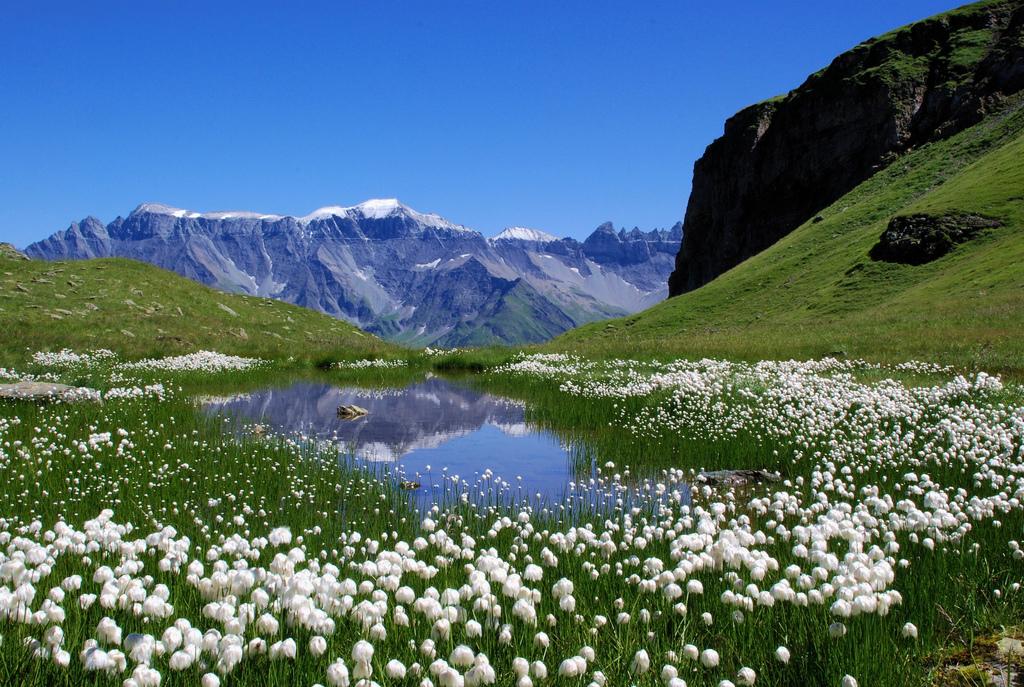
Matthias Zepper, CC BY-SA 3.0, via Wikimedia Commons
Dr. Robbie Hart on Himalayan Alpine Plants, Climate Change, and Ethnobotany
By Gayil Nalls
Sign up for our monthly newsletter!
At the roof of the world, where snowmelt feeds the rivers of Asia and jagged peaks pierce thin blue air, alpine plants cling to life between stone and sky. These plants are survivors, mediators, and bellwethers, responding quickly and visibly to the warming climate that is reshaping the Himalayas at twice the global average rate. Amid this fragile beauty, science and tradition converge. Researchers measure shifting plant ranges while mountain communities pass down generations of knowledge about when flowers bloom, where medicine grows, and how the land is changing.
It is here that Dr. Robbie Hart, Director of the William L. Brown Center at the Missouri Botanical Garden (MOBOT), has devoted his work. An ethnobotanist and ecologist, Hart and his colleagues return to marked plots across Himalayan summits year after year, documenting the quiet but profound transformations of alpine plant communities. Alongside this meticulous ecological monitoring, he works closely with Indigenous and local mountain communities to understand how ecological change intersects with cultural practices, medicine, and livelihoods. He listens closely to these local voices whose lived experience adds nuance to the data and challenges the assumptions of science.
In this interview, Dr. Hart reflects on what a decade of Himalayan research reveals about climate change, why traditional ecological knowledge matters, and how insights from the world’s highest mountains can help guide both local adaptation and global policy. His stories remind us that the fate of these delicate plants, the Nepalese medical system, and the cultures that have long depended on them, echoes far beyond the high passes. The research highlights not only the vulnerability of mountain ecosystems but also their critical role in shaping a more resilient future.
Gayil Nalls: In your long-term monitoring of Himalayan alpine plants, what changes have you found most striking, and how do they inform predictions for biodiversity at high elevations?
Robbie Hart: The method that we use is designed for measuring long-term changes in mountain plant communities. We set up plots on alpine summits spanning from the treeline to the highest summits where plants can grow, record the abundance of each species, install temperature loggers, and return in 5-10 years to see what changes have occurred. It’s a simple method. It’s designed to be future-proof so that the team can revisit the same site with the same methods, in 7 years, or in 70. However, we also collect detailed data in an exacting way so that we’re sure our data is comparable to data that a future team will collect, and to data that’s being collected at the more than 100 other mountain regions around the world where other teams are joining the same effort. This means that we can see global trends in the ways that alpine plants respond to climate change, as well as regional specifics. In our case — in the plots in the eastern Himalaya — we see, based on the first decade of monitoring, an over increase in species richness (more species). This is in line with results from many other plots using the same methods. However, many European plots are showing loss of endemic species (those found only in the mountain regions of interest). In contrast, our plots show that currently, Himalayan endemic species are increasing along with overall richness. However, at our lowest and fastest-warming summits, non-endemic species are increasing faster, as much as two times as fast as Himalayan endemics. This suggests a future in which a warmer climate shifts plant communities away from the unique Himalayan flora.
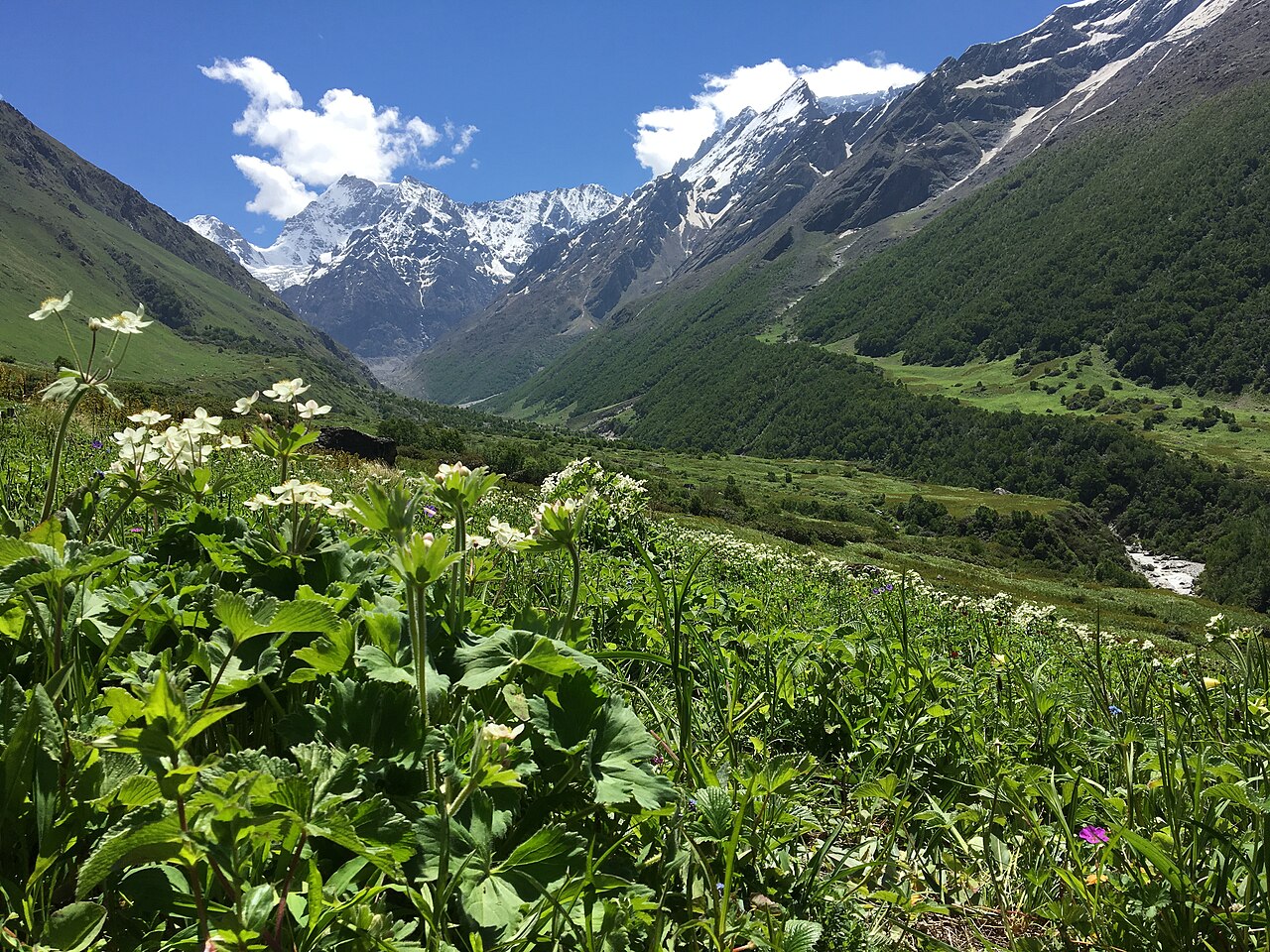
Flowers blooming at Nanda Devi Valley of Flowers National Park, Chamoli, India in the month of May and June. Naresh Chandra, CC BY-SA 4.0, via Wikimedia Commons
GN: How does the traditional ecological knowledge of Himalayan communities complement or challenge your scientific findings on plant range shifts and phenology? And mountain communities’ plant knowledge adapts alongside ecological change?
RH: Beyond the ecological monitoring method shared across the global network that I mentioned above, our group working across the Himalayas adds ethnobotany, working with local and Indigenous mountain residents, to assess plant use and traditional ecological knowledge. This lets us predict what downstream effects on people might result from climate-driven changes to plant communities. It also, as your question suggests, lets us contextualize or challenge our expectations based on ecological methods. For instance, by many ecological metrics, useful plants are responding positively to climate change. So, with an increase overall in species number, we also see more useful species. And even particular species of especially high value are measurably increasing in occurrence within our measurement areas. Examples include several aromatic rhododendron species in Central Bhutan that are important as incense, both for local spiritual practice and for trade within the country. Ee found that increase in the prevalence of these species as measured at our sites did not reflect people’s perceptions of resource abundance. In contrast, local mountain residents attested disruption and decreased availability of plants of the expected quality, predictability, season and location. This doesn’t mean that the ecological measurements are incorrect; just that we have to be careful to pay attention to what exactly is being measured, and to how far we can extrapolate from those measurements. Or use methods from multiple disciplines, as we do!
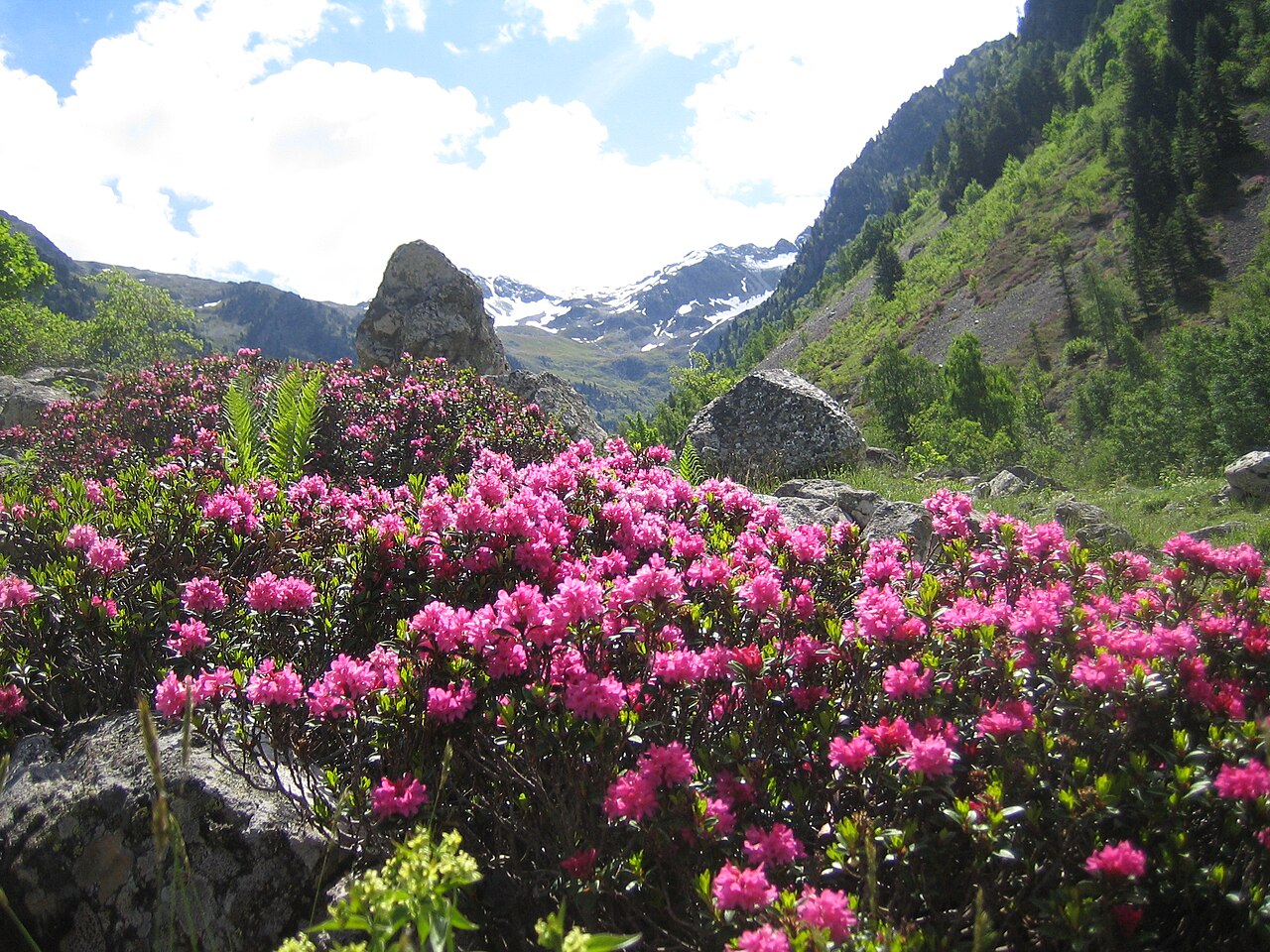
GN: What role do you see for alpine plant research in shaping climate adaptation strategies, both locally in the Himalayas and in broader global policy contexts?
RH: Climate adaptation is essential — already, and increasingly so, even in the most positive scenarios. Of course, this doesn’t mean that mitigation is any less necessary to make sure that we have the time and resources we need to adapt. So, we hope that the global voice of results from across our network — representing biodiverse and culturally central mountain regions around the world — helps drive mitigation policy and national and global levels. At the same time, the specificity of the data we collect means that we can test and promote local adaptation measures. One example of this is in Nepal, where some of the plants that we can document being negatively affected by climate change are also important to local medical systems. Our team there, led by Dr. Suresh Ghimire and including many committed graduate students, has worked with local medicine specialists to suggest culturally-appropriate alternative plants, to experiment with cultivating some plants that are traditionally wild collected, and document harvest locations and amounts that promote, rather than harm, future generations. These can inform local practice and policies within the region to adapt behavior and regulatory systems to the changing pressures on plant populations.
The Himalayan alpine region stretches across several countries in South and Central Asia, each containing portions of the world’s highest mountain ranges and unique alpine ecosystems. The main countries of the Himalayas and their alpine zones are:
Nepal: Home to much of the central Himalayas, including Mount Everest (Sagarmatha) and Annapurna. Its alpine zones start above 3,000 meters and extend to over 8,000 meters, supporting species-rich meadows, dwarf rhododendron, and alpine herbs.
India: The Indian Himalayas span states such as Jammu & Kashmir (Ladakh), Himachal Pradesh, Uttarakhand, Sikkim, and Arunachal Pradesh. Alpine ecosystems occur above the tree line, with high-altitude grasslands, cushion plants, and medicinal herbs like Saussurea species.
Bhutan: Known for well-preserved alpine meadows and high-altitude lakes, the Bhutanese Himalayas harbor rare flora such as blue poppies (Meconopsis spp.) and alpine rhododendrons, thriving above 3,500 meters.
China (Tibet Autonomous Region): The northern slope of the Himalayas lies in Tibet, with extensive alpine steppes, cushion plants, and cold-adapted species. This region connects to the Tibetan Plateau.
Pakistan:The western Himalayas extend into northern Pakistan (Gilgit-Baltistan), overlapping with the Karakoram and Hindu Kush ranges. Alpine habitats here include meadows, glaciers, and high-altitude shrublands.
Additionally, Afghanistan lies west of the main Himalayan chain but is often included in the greater mountain system through the Hindu Kush, while Myanmar connects to the eastern Himalayan foothills with subtropical-to-alpine transitions
Gayil Nalls, PhD, is the founder of the World Sensorium Conservancy.
Plantings
Issue 52 – October 2025
Also in this issue:
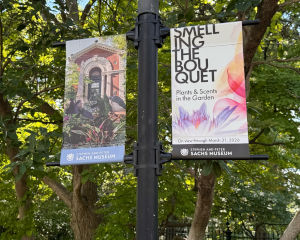
The Living Language of Scent: An Exploration of Perfume Plants and Cultural Memory
By Nezka Pfeifer
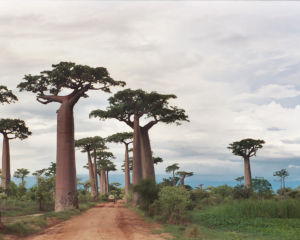
Plant Conservation in Madagascar
By Gayil Nalls

What if AI worked like a forest?
By Willow Gatewood
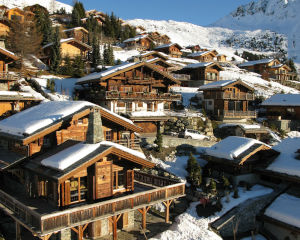
The Unsteady Future of Alpine Tourism
By Caterina Gandolfi
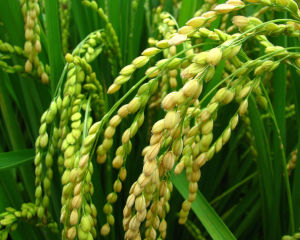
Climate Change, Arsenic, and Rice: Dr. Lewis Ziska on the Future of a Global Staple
By Gayil Nalls

Eat More Plants Recipes:
Belgian Endive Soup: Le potage de chicons
By Frank Léglise
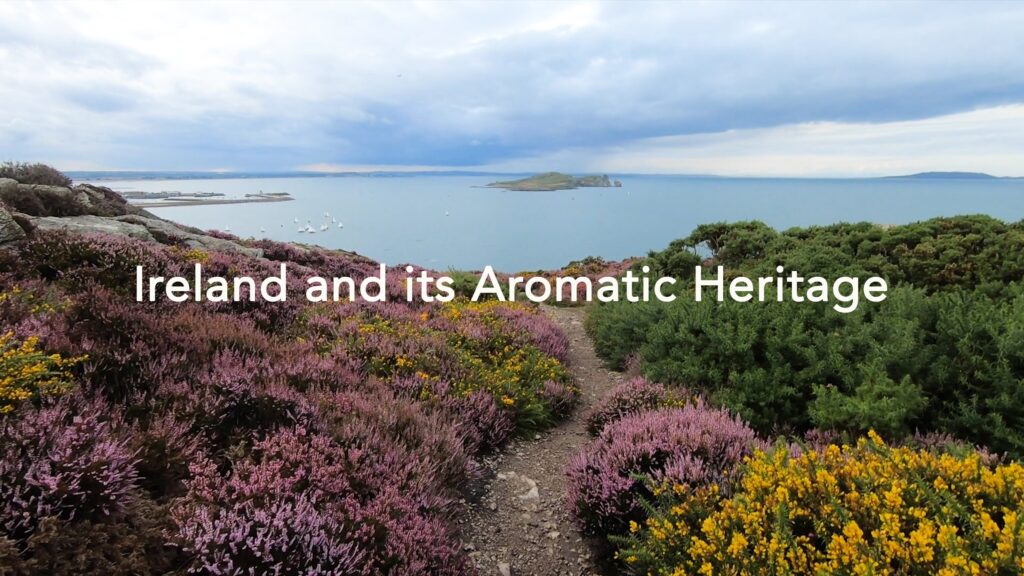
As Ireland transitions from the rich, smoky scent of peat-burning to a more sustainable future, its olfactory heritage is evolving. What will become the next iconic aromatic symbol of Ireland?
Click to watch the documentary trailer.

